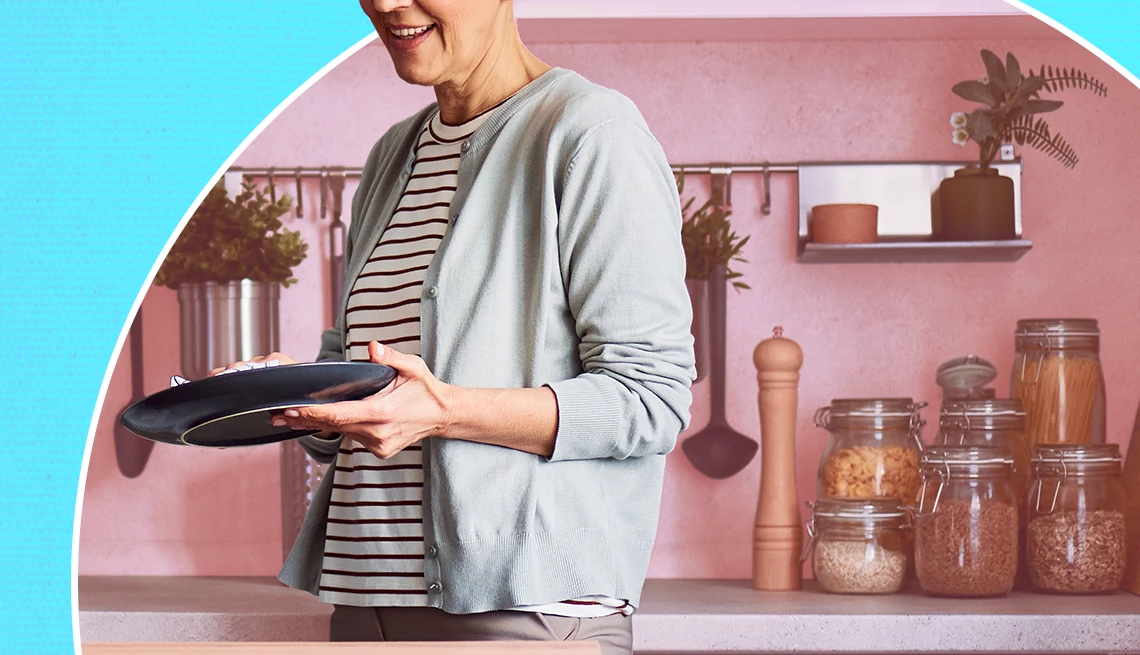AARP Hearing Center


Is your kitchen accessible? Can you easily reach spices on higher shelves or grab a heavy skillet from a deep lower cabinet? If you or a loved one were recently diagnosed with a condition that affects mobility, vision, memory or diet, then reorganizing your kitchen may be an important step to help you stay in your home with autonomy.
Freelance journalist Theresa Russell, 70, was diagnosed with Non-Arteritic Anterior Ischemic Optic Neuropathy (NAION), a condition which affects her vision. Her penchant for hot tea means that she frequently boils water. Recently while attempting to boil water on the cooktop at her son’s house, Russell smelled something burning. Due to her limited vision, she didn’t realize that she was heating up a cookie sheet instead of her kettle. At home she uses an electric kettle that has an auto shut off to prevent similar accidents.
We spoke to experts to learn ways to adapt a home to prevent accidents and create a safe, accessible kitchen and pantry.
Declutter your kitchen
The first step to adapting your home is to either donate and/or dispose of any items you no longer use, including food. “People hold on to things for way too long in their pantries,” says Jennifer Szakaly, a gerontologist and care manager at Caregiving Corner. Decluttering will allow you to easily access kitchen utensils or needed food without reaching or searching for it. “A lot of injuries that happen in the kitchen are from people reaching [for] something that they shouldn't have been trying to reach [for],” says Szakaly.
She suggests going through all the items in your pantry and kitchen and asking yourself, “How often do I use this item?” or “Is this very necessary?” Sometimes people have legacy cookware that has been handed down for generations but never used. It may be hard to part with that sentimental baking dish or your grandmom’s cast iron skillet but donating the cookware will create more space in your cabinets and give someone else the opportunity to use it.
Next step: Check label expiration dates and throw away any expired food in your pantry or refrigerator and freezer. If packaged food is not expired and you don’t plan to consume it, then you can donate it to a food pantry. “We’ve had some caregivers that even turn that into an activity,” Szakaly says, “to feel a little bit more connected with the process of donation.”































































More From AARP
Caregiving Items that Make Mealtime Easier
Adaptive dinnerware, utensils and tools that reduce stress and boost independence7 Tips to a More Organized Fridge and Freezer
You’ll waste less money on food if you have your appliances under control. Here’s how to do itOne-Pan Dishes Economize on Cookware, Not on Flavor
Try coconut-crusted fish, manicotti ‘enchiladas’ and other less-mess meals
Recommended for You